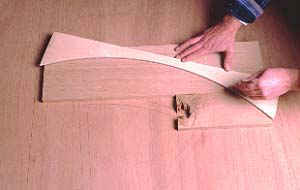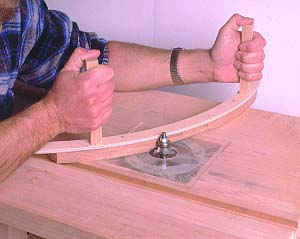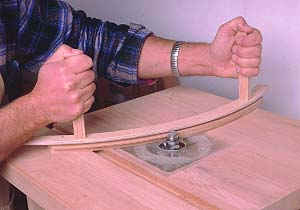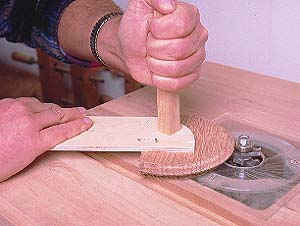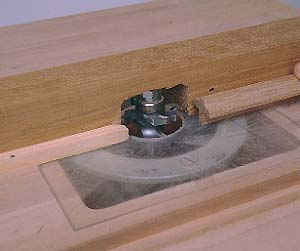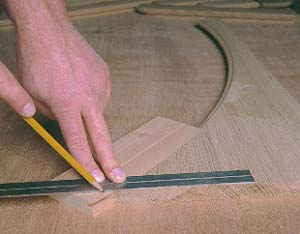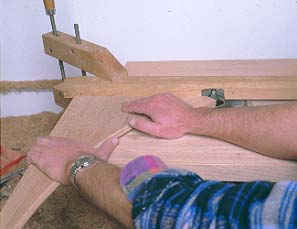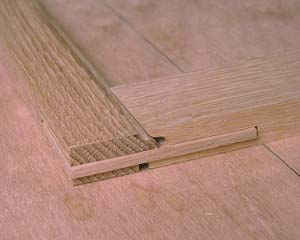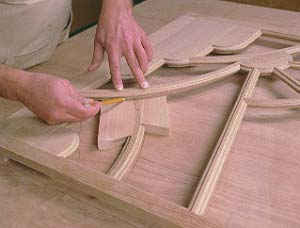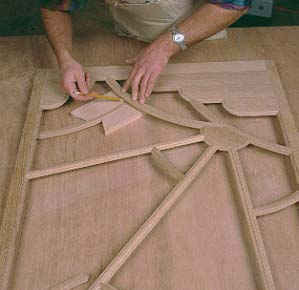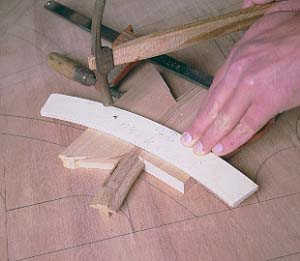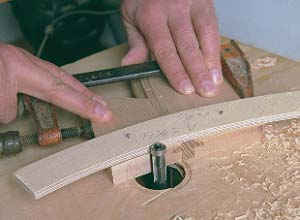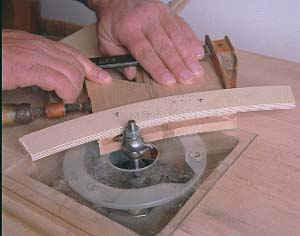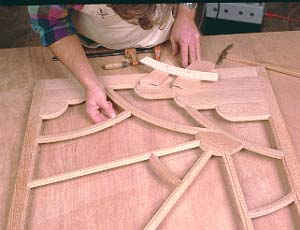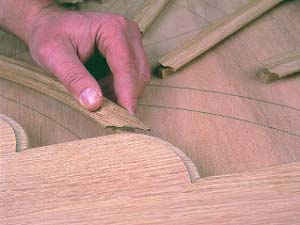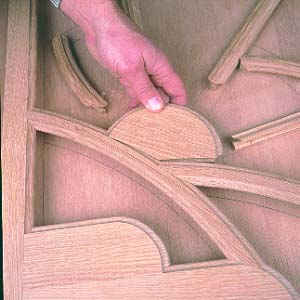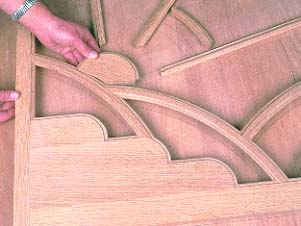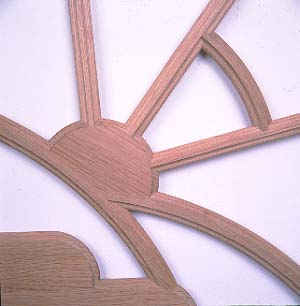Curved Cope and Stick Joinery With Stock Router Bits |
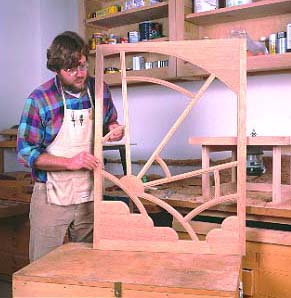 Requirements For This
Project You'll need two routers
in router
tables to do this procedure, as well as a small band
saw and a table
saw. Also required are the following router bits- a straight fluted flush trimmer, a
rabbeting bit that matches the sticking depth and a set of cope
and stick cutters. The latter will cost around $75. Your stock
must be flat to do this work precisely. Using a jointer
and planer
to flatten stock will help tremendously. Otherwise, pick stock very
carefully for flatness and uniformity of thickness. Other useful
items are trammel
points and a
radius jig. Isn't that an awful looking shirt? Requirements For This
Project You'll need two routers
in router
tables to do this procedure, as well as a small band
saw and a table
saw. Also required are the following router bits- a straight fluted flush trimmer, a
rabbeting bit that matches the sticking depth and a set of cope
and stick cutters. The latter will cost around $75. Your stock
must be flat to do this work precisely. Using a jointer
and planer
to flatten stock will help tremendously. Otherwise, pick stock very
carefully for flatness and uniformity of thickness. Other useful
items are trammel
points and a
radius jig. Isn't that an awful looking shirt?
|
'COPE AND STICK' JOINERY (or 'stile and rail') is a very common means of making wood frames for glass or wood panels. Large window and door shops use this technique with expensive shapers and molders for producing large runs of square sash and doors, as well as some curved pieces. Cabinet shops do the same thing for kitchen cabinet doors, often using router bits. Using such bits you can do the same thing in your shop for making cabinet doors with wood panels or glass. Here we are going to focus on using such bits for the purpose of making curved components for a cabinet door in which there will be glass, or wood panels if you like.
These are advanced router techniques. They can require that you cut very small parts on the router table, as well as climb cut against the grain. There are safe ways to do both of these, but it will be easier and safer if you have a few years experience doing various router work. If you are newer to routers, I suggest you use a design that incorporates larger parts with larger radii, since these present less of a problem.
"Sticking" refers to the molded edge along the inside of a door or window frame. We use a "stuck" edge because it looks better than a square corner, but it creates the technical problem of how to join the molded profile at the corners. Through the centuries craftsmen have used a variety of hand techniques to do this. The solution used in the machine age is a variation on one of those, which involves cutting a "cope" into the end of any part that butts up against the edge of another part on its sticking. The cope cut is an exact negative profile of the sticking and fits closely over it (see drawing #1). The result at the corner is a tightly fitting joint.
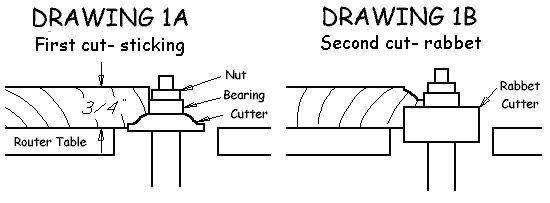
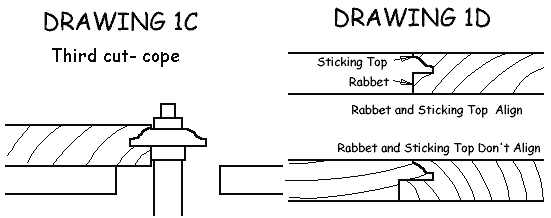
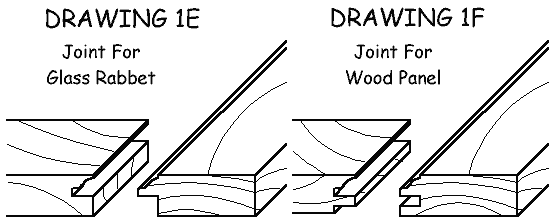
Handplanes were used to do this, and these were replaced with spinning steel knives on shapers or specialized machines like tenoners, and later carbide cutters for both shapers and routers. The handplane method, to my knowledge, is only capable of cutting straight sticking and copes unless you make specialized handtools to accomodate curves. But with guide bearings on shapers and routers it is easy to cut both sticking and copes along curves. This capability gives you almost infinite design freedom. If you can draw it, you can make it. This is true with the one limitation that parts must have a minimum width or else there is little or nothing to join.
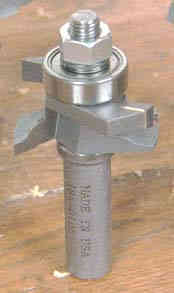
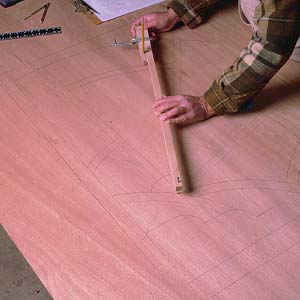
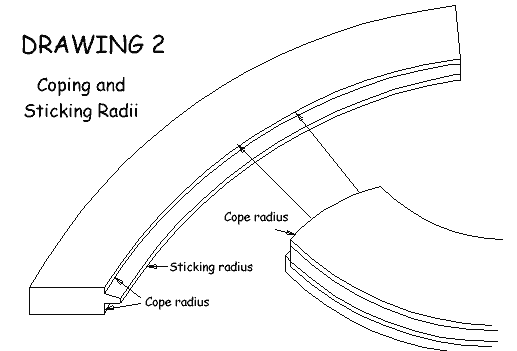
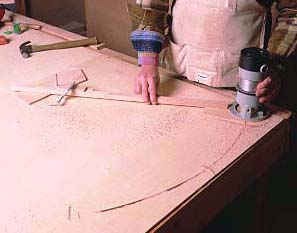
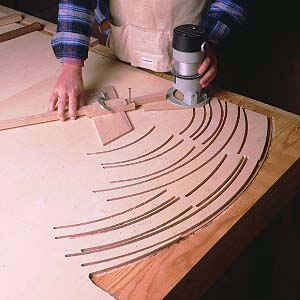
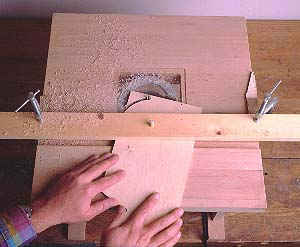
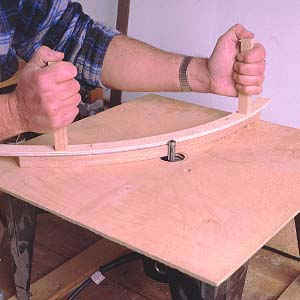 Photo 5- Flush trim parts to the
sticking templates. Install safety handles on the templates with
countersunk screws so that you can keep your hands away from the
bit. Climb cut against the grain by applying firm pressure down on
the table with the safety handles, and take light slow
cuts.
Photo 5- Flush trim parts to the
sticking templates. Install safety handles on the templates with
countersunk screws so that you can keep your hands away from the
bit. Climb cut against the grain by applying firm pressure down on
the table with the safety handles, and take light slow
cuts.